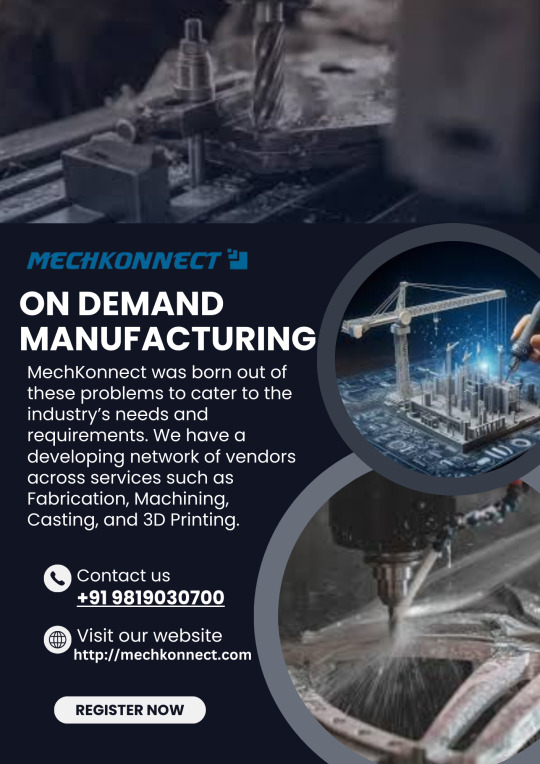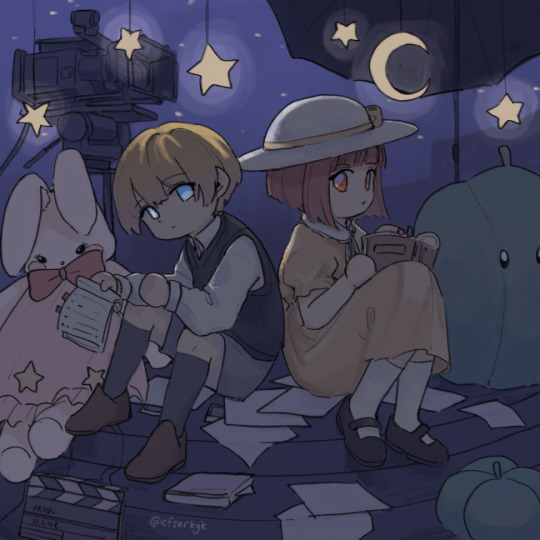#Casting Process
Explore tagged Tumblr posts
Text
Casting for a new television show is always an interesting process. Sometimes, producers have an actor in mind when they've created a character; other times, the process can be long and arduous. When actors respond to a show's casting call, they know there will be plenty of competition, so they often brace themselves for disappointment. When the show Ghosts was casting a few years ago, Richie Moriarty took his chances. Spoiler alert: He got the role on the show. But, as he told a Comic-Con panel audience a few years ago, landing the role on the comedy series didn't come without some drama.
Ghosts airs Thursdays at 8:30/7:30c on CBS, and episodes start streaming the following day on Paramount+.
#casting#auditions#actors#television#entertainment#behind the scenes#interview#Ghosts#Richie Moriarty#Comic-Con#comedy series#casting process#Ghost CBS#CBS#Paramount+#TV#TV News#television news#Entertainment#Entertainment news#Celebrities#Celebrity#celebrity news#celebrity interviews
6 notes
·
View notes
Text
Anyone who had questions about the process behind casting “Jordan” Derek has great insight about it in this interview.
13 notes
·
View notes
Text
A Step-by-Step Guide to the CNC Machining Process: From Design to Operation
Curious about how CNC machining works? This article from MechKonnect breaks down the entire process — from creating a precise digital design and selecting the right materials to programming, tooling, and final production. Understanding each stage helps manufacturers streamline operations, reduce errors, and achieve high-quality results.
Whether you're a business looking to enhance production or need expert CNC services, MechKonnect is here to help. Call 9819030700 to discuss your machining needs with our specialists. Read More:

#casting process#3d printing services#moulding process#metal fabrication near me#metal manufacturing#3d printing services near me
0 notes
Text
10 Different Types of Casting Process Used in Manufacturing
The article aims to discuss the various kinds of casting processes that are used globally in the manufacturing industry for producing quality products.
There has been a notable increase in the industrial products. That should not be a problem, because there are several kinds of metal casting services. With the help of these services, complex products can be effortlessly manufactured.
In order for the firm or company to choose the right or specific kind of casting manufacturing process, they need to first know the different types of casting processes that are used in the manufacturing industry.
Each of the casting process methods comes with its own benefits and flaws. A brief overview of various types of casting processes has been provided in the article.
What is the casting process?
The casting process is a method where the metal parts are produced according to the specific needs of the clients. It is done by pouring the molten metal into a mould. Then once it has been poured, hardened, and cooled, the desired shapes are designed.
So, casting helps industries achieve their goal of having the metal pieces according to their shapes, ideal for mass production. Besides, there are several kinds of casting that can immensely help to satisfy the user requirements.
What are the different types of Casting Processes?
There are different kinds of casting processes that can be used according to the needs of the user.
Sand Casting Process
The sand casting is a simple process of casting that helps cast ferrous or non-ferrous metal alloys. This method is mostly used for the production of metals that find applications in the automobiles like the engines, cylinders, and crankshafts.
The mould is produced from silica-based substances that can be naturally bonded. Then it is used to produce a mould surface that is smooth. The mould surface consists of two parts namely, cope (the upper half) and drag (the lower half).
Then the molten metal is poured into the desired pattern. Then it is left to harden so that it can form the final shape. The excess metal is removed in the final metal casting product.
Gravity Die Casting
This method is also called permanent mould casting. Here the metal and the metal alloys are fabricated using the moulds that come reusable. They can be steel, graphite, and the like. The metal casting process can be used to make items like gears, pipe fittings, wheels, and so on.
The molten metal is directly poured into the mould cavity. This happens when there is an influence of gravity, where the die is angled to adjust the filling. Then, the molten metal is let to cool down so that it can solidify inside the mould.
This method uses the mould from the bottom up, which enables it to have a greater casting rate than sand casting. But it can be somewhat costly than most methods.
Pressure Die Casting
There are two types of die casting, namely low-pressure die casting and high-pressure die casting. Low-pressure die casting is used for the production of large components. The high-pressure die casting is used in the production of geometrical shapes that need very high precision.
Some examples would be nonferrous metals like zinc, tin, copper, and aluminum.
Investment Casting
This type of casting is also known as lost-wax casting. Here the metals are produced by using the wax pattern of the metal. Then a refractory material and a binding agent are used. This is done so that the exact shape is obtained, and the molten metal can be poured into the mould.
It is a labour-intensive process that is expensive as well. This method is used to produce several products like gears, bicycle trunks, moto discs, and blasting machine replacements.
Plaster Casting
The casting process makes use of the mould that contains ‘Plaster of Paris.’ Here, the plaster is allowed to cool and then the metal is let to dissolve in the contents, due to the limited thermal conductivity.
This helps achieve high precision. The method is used to produce cross-section pieces that are narrow & need to fit in small gaps. It helps in the production of small castings that contain small amounts of castings of 45 kgs.
Centrifugal Casting
This kind of casting is called roto casting where cylindrical objects are produced for industrial applications. It is done with the help of the centrifugal forces. Here the metal is poured into the spinning die of the metal casting.
Then at high pressure with the help of the centrifugal forces, the molten metal is shaped inside the die. Because the spinning happens constantly, the metal that is in molten form takes the shape of the centrifugal casting.
Examples can include bush bearings, clutch plates, piston rings, and cylinder liners.
Lost-Foam Casting
This method is almost the same as the investment casting. However, the pattern is made of foam, and not from wax. When the design of the metal has been produced, the casing is coated with a refractory ceramic.
Then the molten metal is poured into the mould. The method is used to produce alloy steel, carbon steel, alloy cast iron, and ferrous alloys.
Vacuum Casting
This kind of casting method happens under a vacuum pressure of 100 bar. This is done to help the exhaust gas from the mould. Besides, it helps remove the bubbles and air pockets, when the molten metal is poured inside a vacuum chamber.
Then the metal is cured in a heating chamber. The products formed are commonly used in the automotive, aerospace, electronics, marine, and telecommunications.
Squeezing Casting
In this casting method, the high pressure is used for preventing shrinkage. But due to the specialised tooling requirements, it can’t be used for large production. Some products include space frame joints, aluminum front steering knuckles, chassis frames, and brackets.
Continuous Casting
In this type of casting the production of metals profiles comes infused having a constant cross-section. It is mainly used for the production of steel bars. Besides, it can be also used for semi-continuous casting.
The molten metal allows a solid metal surface to form on the liquid metal. The solidification of the metal happens from the outside. Then the remaining strands of the metal can be taken away from the mould.
Conclusion
This is it. These were some of the most popular casting methods that are used in the market. Each method has its own pros & cons. From the above article, it becomes obvious that choosing the appropriate casting method is critical for producing sublime products. With so many different types of casting methods metal components can be produced. It becomes crucial that the right kind of casting method is used to produce quality goods.
0 notes
Text
Die Casting - An Insight into the Intricate Metal Forming Process
Die casting is a metal forming process where molten metal is injected at high pressure into steel molds or dies. Due to the high pressures involved, it results in products with very tight tolerances and precise dimensional specifications. This helps produce intricate components with complex internal passages in high volumes, at competitive costs compared to other manufacturing processes. History and Applications It is a relatively old manufacturing technology that was first developed in the late 18th century for producing metal buttons and thimbles. Over the years, advancements in metal alloys and casting equipment led to expanding applications of it, especially for zinc and aluminum. Today, commonly die cast metals include aluminum, zinc, magnesium, copper and tin-based alloys. Major industries using die cast components include automotive, industrial equipment, electronics, hardware, and household appliances. Common applications are engine parts, transmission components, housings, casings, and covers for electronics, tools, and consumer goods. It accounts for over 60% of all aluminum cast parts produced globally. Different Methods There are two main casting methods in use today - hot chamber and cold chamber Die Casting . Hot chamber machines maintain molten metal at a high temperature inside a holding furnace. Cold chamber machines solidify molten metal in a shot sleeve before injecting it into the die under pressure. Within these, there are further variants depending on the type of filling method - gravity, low/high pressure, and squeeze casting. Hot chamber casting is preferred for zinc and tin-based alloys, while aluminum alloys are commonly cold chamber die cast. Each method has merits suited for certain alloy compositions and part sizes/thicknesses. Process Steps The key steps involved in casting are: 1. Preparation of die and mold cavity 2. Melting and alloying of metal 3. Metal conditioning and transfer 4. Shot delivery into the die cavity 5. solidification under applied pressure and cooling 6. Die opening and part ejection 7. Finishing of cast parts The die or mold containing the cavity of desired part shape is first prepared using tool steels. Molten metal at 700-800°C is transferred and conditioned in the shot sleeve of the Die Casting machine. On trigger, a shot of melt is injected rapidly into the die cavity under very high pressures of 600-1500 kg/sq cm before solidifying. Accurate temperature control is vital to obtain quality castings. Design Considerations for Die Cast Parts Designing die cast parts requires careful planning to ensure production feasibility, dimensional accuracy, and assembly/performance needs. Key factors considered are part size/weight limitations, wall thickness variations and thick/thin sections, draft angles, gates and risers placement, machining/finishing requirements post casting, functional lives under service loads/temperatures, and surface finish needs. Finite element analysis involving thermo-mechanical simulations is often used at the design stage to validate castability. Functional designs help achieve dimensional consistency and elimination of defects in high volume production. Get more insights on Die Casting
Vaagisha brings over three years of expertise as a content editor in the market research domain. Originally a creative writer, she discovered her passion for editing, combining her flair for writing with a meticulous eye for detail. Her ability to craft and refine compelling content makes her an invaluable asset in delivering polished and engaging write-ups.
(LinkedIn: https://www.linkedin.com/in/vaagisha-singh-8080b91)

#Die Casting#Metal Casting#Precision Manufacturing#Aluminum Casting#Zinc Casting#Casting Process#Industrial Casting#Mold Casting
0 notes
Text
looking at next month's schedule and between the end of 7-12 and the wishing lantern event it's like

February is officially RIDDLE MONTH, brace yourselves to be absolutely blasted into ashes everybody

#art#twisted wonderland#twisted wonderland spoilers#twisted wonderland episode 7 spoilers#twisted wonderland book 7 spoilers#twisted wonderland episode 7 part 12 spoilers#twisted wonderland book 7 part 12 spoilers#negai no lantern#gif warning#gifs that have memorized all 800+ rules and expect no less from you warning#sorry cater and azul i hope you have very happy birthdays but i'm going to actually explode#just laying on the floor and thinking about rapunzel-themed event feat. riddle#and ESPECIALLY right after we get his big dream sequence wherein he fistfights his deep-seated personal issues#and i'm STILL processing trey's dream and what it says about his friendship with riddle especially like#i'm#i just#okay hold on i gotta distract myself by looking at the other lantern boys#and their beautiful long flowing tresses that defy physics to blow dramatically behind them#whoever keeps putting jack in the shimmery sparkly delicate floaty chiffon events is my personal hero#his card is incredible. he looks like a perfume ad.#he wants us to know that you can live a rugged outdoorsy lifestyle and still have an undertone of delicate floral notes#god. everyone looks amazing this event is going to be amazing#and like...it probably isn't going to go too deep because silly event versus main story and all#but just the act of casting riddle as the center is still just so#like#i gotta go lay on the floor some more
7K notes
·
View notes
Text
Why is casting so important?
Casting is a crucial process in manufacturing and engineering for several reasons:
Casting allows for the production of complex shapes and components that would be difficult or impossible to create using other manufacturing methods. It enables intricate designs with internal features, such as cooling passages in engine blocks or intricate patterns in decorative pieces.
Casting can be used with a wide range of materials, including metals, alloys, plastics, and ceramics. This versatility allows manufacturers to select the most appropriate material for the intended application, whether it requires strength, heat resistance, corrosion resistance, or other specific properties.
Casting often offers cost advantages compared to other manufacturing methods, particularly for large production runs. Once the initial tooling is created, the cost per part tends to decrease with higher volumes. Additionally, the ability to reuse molds for multiple casting cycles further reduces per-part costs.
Read more:
#casting#casting process#metal casting#metals#alloys#materials science#science#engineering#materials#materials science and engineering#mold
0 notes
Text
Precision Metal Casting: Your On-Demand Solution for Superior Casting Processes
Discover unparalleled excellence in metal casting with our on-demand manufacturing company. Experience precision and efficiency in every casting process, tailored to meet your unique specifications. Elevate your projects with our expertise in delivering top-notch metal components.
For Visit :- https://mechkonnect.com/metal-casting-servicing-mechkonnect/

0 notes
Text

emma dupain cheng on the brain😽🎀
more:





#ml#miraculous#miraculous ladybug#my art#emma dupain cheng#emma agreste#(i think that may the more popular tag for her lol. she is a dupain cheng in my heart though)#plagg#she is thirteen almost fourteen here btw. because i love circularity#emma dupain cheng to me is like. what if emilie or adrien grew up in a stable home with no trauma. that’s emma#and she is theater kid✨#and adrien and marinette are soooo so so supportive and love going to her shows and are so proud of her#/marinette has to be held back from trying to manipulate the school play casting process to secure emma the lead every year#but then emma sets her sights on bigger things(broadway west end)#and adrien pumps the breaks big time#and he’s so torn between supporting her interests and wanting so badly to keep her from like. being a child actor. having a job. b#being pulled from school#and emma gets upset bc he is standing in the way of her dreams#and they fight about it:(#and then emma discovers plagg and convinces him to help her sneak out and go to her callback that she secretly auditioned for#(and forged all the parent signatures for lol)#and. well. plagg CAN be bribed#and also she just reminds him so much of baby adrien🤧 he is a softie#and she runs away to her callback. and adrien and marinette wake up the next morning and see on the news that there is a new chat noir.#anyway. not that i’ve thought about it or anything
5K notes
·
View notes
Text




#i'm going to. stare at the ceiling for an hour i think#i need to process#EDIT. ryan most likely said fuck or bum or whatever but. this is my truth now :)#ryan guzman#oliver stark#ryliver#911 cast#*#*911
594 notes
·
View notes
Text
Ways To Impress a Director: A Guide for Aspiring Actors

Impressing a director is a crucial part of an actor's job, whether it's during an audition or while performing a role. Directors are the visionaries behind the scenes, and earning their approval can open doors to great opportunities. Here are seven ways to make a lasting impression on a director.
1. Understand the Character
Before you step into an audition or start performing a role, take the time to understand your character. Research their background, motivations, and relationships. The more you understand your character, the better you can portray them.
2. Be Professional
Professionalism goes a long way in impressing a director. This includes being punctual, prepared, and respectful to everyone on set. Remember, your behavior off-stage or off-camera can also impact a director's impression of you.
3. Show Versatility
Directors appreciate actors who can show versatility. This means being able to adapt to different roles and genres. Showcase your range during auditions and be open to feedback and direction.
4. Take Direction Well
Speaking of direction, one of the best ways to impress a director is by taking direction well. This shows that you're easy to work with and committed to delivering the best performance.
5. Bring Something Unique to the Role
Directors are always looking for something unique and memorable in a performance. Try to bring something unique to your character that sets you apart from other actors.
6. Show Commitment to the Role
Directors appreciate actors who show commitment to their roles. This means doing your best to deliver a convincing performance, even if it means stepping out of your comfort zone.
7. Be a Team Player
Theatre and film are collaborative efforts. Being a team player and building positive relationships with your co-actors and crew can impress a director and make the production process smoother.
Making Your Mark
Impressing a director is about more than just your acting skills. It's about your professionalism, your ability to take direction, and your commitment to your role. By following these seven strategies, you can make a lasting impression on a director and pave the way for a successful acting career.
0 notes
Text
Mariska Hargitay was born and raised in Los Angeles, but when she answered a casting call for a new Law & Order show in 1999, the show would be filming in New York City. When she won the starring role, little did she know she'd be spending the next 25 years (and counting) working in the Big Apple. We've spoken to Hargitay many times over the course of the show, and she acknowledged that her work on SVU has changed her not only professionally, but also personally.
Law & Order: SVU airs Thursdays at 9/8c on NBC, and episodes start streaming the following day on Peacock.
#Mariska Hargitay#Law & Order: SVU#actress#interview#biography#career#New York City#television#casting process#life changes#personal growth#long-running series#NBC#Peacock#Peacock TV#entertainment news
5 notes
·
View notes
Text

♦️♣️ Heartslabyul ♠️♥️





#twst#twisted wonderland#twst fanart#coughs into hand#hey folks#art block sucks! it really does#i had these finished before that had happened but i was going to do all the cast before it hit#now i just dont want them to rot in my save files forever so#ill post what i have done for em#here they go#riddle rosehearts#ace trappola#cater diamond#deuce spade#trey clover#more yelling from me#i am not the most knowledgable on tarot and i did my best learning as i was going about the assignment process from meanings i could figure#but i wanna hear people talk about em!!#think this is in part mostly me picking apart characters cause i like seeing how they tick#im weird#i get it
558 notes
·
View notes
Text
Why New SMEs Should Opt for On-Demand Manufacturing

Looking for reliable and high-quality metal fabrication services? Mechkonnect offers expert solutions tailored to your needs. From custom designs to precision manufacturing, our team ensures durability and efficiency in every project. Contact us today at +91 9819030700 to discuss your requirements. Read More:
#casting process#3d printing services#metal fabrication near me#moulding and casting#metal manufacturing
0 notes
Text
Fills me with RAGE that the Trinity Santos thinkpieces are about "wow we hated her because she was a jerk and suspected our favorite white boy of stealing meds but she was RIGHT and that blew all our minds! Unpleasant women can be right too!" And not "wow this interesting character who builds fraught connections with half the people in this building and has a weird relationship with male authority was revealed to have been molested in a scene where she protects someone else from the same thing, what a complex heroine"
#am i projecting? yes a lot#the pitt#(it's agreed that it was her coach right? idk what the cast or creators have said#but she did sports + her threat speech didn't talk about family + her best friend was as close to the situation as she was = sports coach)#also ''ough everyone loved langdon until he was revealed to be stealing!'' skill issue that man has the worst vibes#(this applies to everyone except grace because self recognition through the character is a strange and sacred process not to be trifled with#(also this is not me hating on langdon in defense of other characters.#this is me saying people who unquestioningly loved langdon without acknowledging his character flaws#are idiots for several reasons)
254 notes
·
View notes
Text

Child Actors Aqua and Kana on the occasion of season 2.
I imagine that if everything didn't go downhill with Ai, Aqua and Kana would have been able to act in more films together and maybe be paired together in more projects. And an actual childhood friend relationship would be real nice.
#The moon and stars because I always liked the symbolism of Aqua being associated with the stars and Kana with the moon#I know I say this a lot but characters growing up healthy? I'd like to see that please#Aqua and Kana being casted in many dramas together and slowly get to know each other better in the process you know#Then Ai slowly becomes something similar to a mother figure to Kana too maaaybe?#(guys but what if they filmed the bell pepper dance together)#hoshino aqua#arima kana#oshi no ko#onk#aquakana#aqua x kana#aqukana#illustration#aquamarine hoshino#onk fanart#oshi no ko fanart#oshinoko
520 notes
·
View notes